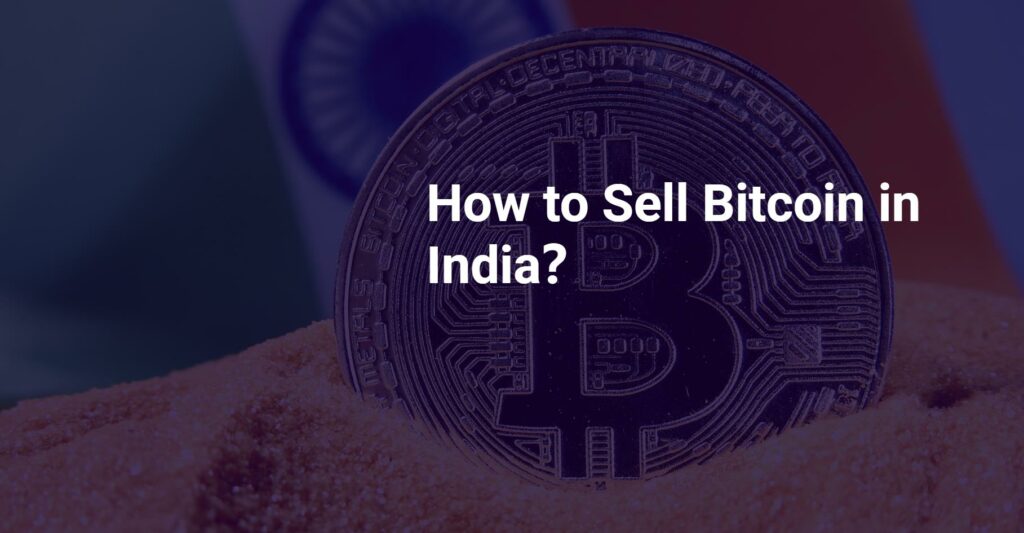How to sell Bitcoin BTC -5.28% in India? The two easiest options – traditional Bitcoin exchanges and peer-to-peer marketplaces.
Over the years, the Indian government has taken an ambiguous stance on cryptocurrencies. India has no national policy or regulations for cryptocurrencies or the best cryptocurrency exchanges. As such, the way exchanges operate is not regulated, and they can determine prices independently. Lack of regulation deters investors from transacting in the country, thus making it more expensive than other regions.
Each method has its own pros and cons, so let’s break it down.
Traditional Bitcoin exchange
Traditional Bitcoin exchanges such as Coinbase, WazirX, and Binance have been the more popular options. They’ve been around longer and are still one of the easiest ways to buy BTC.
On a traditional Bitcoin exchange, buyers and sellers are matched through an order book. Two traders are paired up, and the platform then acts as a middleman to help with the trade.
How to Sell Bitcoin in India with Coinbase
Let’s take Coinbase as an example:
- First, you need to open an account with Coinbase, link your bank account, and make a deposit.
- Once your account is set up, you need to send bitcoins to your Coinbase Bitcoin address! To do this, click on the “Account” tab, open your Bitcoin wallet, and click “Receive”. You will then see your Bitcoin Coinbase wallet address. This is the address you need to send your bitcoins to.
- Once everything is set, click “Buy/Sell” at the top of the page.
- Next, click Sell.
- How to Cash Out Bitcoin The next step is in the wallet. Assuming you have now sent bitcoin to your Coinbase wallet, you should see your bitcoin wallet and your default fiat currency here. You will also see your withdrawal limit. If you have already verified your account, then your limit will be quite high. However, if you need to increase this value, click View Limits and follow the other verification instructions!
- Before you can withdraw your funds, you will need to convert your bitcoins into your local currency. Enter the amount of Bitcoin you wish to sell and the fiat currency equivalent will update.
- Once you click Sell Bitcoin Now, your funds will now be in your fiat currency wallet.
- Ok, we have reached the final step of how to cash out bitcoins to your bank account. Click on your fiat wallet, then click Withdraw. Your bank account details will be saved from your previous setup.
Advantage
Ease, as the platform acts as a middleman to help with the transaction, the transaction is mediated, allowing the trader to have an easier trading experience. This feature makes these types of exchanges more beginner-friendly.
Anonymity, even though most exchanges today have KYC rules, the platform acts as a middleman meaning there is little to no interaction between you and the seller, which means more anonymity.
Beginner-friendly, and in addition to being a middle-man platform, traditional Bitcoin exchanges often let you link your bank account with your exchange account, making transactions faster and easier.
Shortcoming
Compensation, because the platform will act as a middleman between buyers and sellers, so they need more compensation – which means charging more fees to trade participants.
Financial inclusion, many traditional Bitcoin exchanges will usually require their users to link their bank accounts. While the link can make transactions more efficient, not everyone has access to a bank account. There are still unbanked and unbanked populations out there who have the same financial rights as terrorists – no financial inclusion, inability to meet demands, inability to participate in day-to-day transactions, etc.
Peer-to-Peer Bitcoin Marketplace
Just like a traditional Bitcoin exchange, a peer-to-peer Bitcoin marketplace matches buyers and sellers through an order book. However, the main difference between the two is that peer-to-peer marketplaces only interact with traders in the event of a dispute. Otherwise, buyers and sellers will complete the transaction themselves via live chat.
Through this peer-to-peer system, buyers can search for listed offers based on the preferences entered (payment method, preferred fiat currency, location, etc.). Additionally, sellers can also create offers with their set preferences (profit percentage, payment window, offer limits, etc.).
Essentially, a peer-to-peer bitcoin marketplace personalizes the entire transaction process in hopes of making it more efficient.
How to Sell Bitcoin in India with LocalBitcoins
Let’s take LocalBitcoins as an example:
There are two types of peer-to-peer bitcoin selling on LocalBitcoins. One is that you just want to sell your coins, and the other is that you want to make money by selling bitcoins as a trader on the platform.
If you just want to sell bitcoins, you can directly use the same process as buying coins, but you must first recharge your bitcoins to the LocalBitcoins platform to ensure that there is a balance in your platform wallet. Then click “Sell Bitcoin” at the top of the website, then find a buyer, evaluate the buyer’s reputation and payment method, etc., confirm the sale order, and the platform will lock the coins you want to sell.
Then wait for the buyer to pay you, wait for your bank card or Alipay, etc. After receiving the money, just go to the release platform to lock your coins, and the platform will transfer the coins to the buyer. The process of buying coins is roughly the same.
But be aware that the platform will charge you a 1% handling fee for the process of selling coins.
The second is to be a trader on the platform. At this time, you need to do one more process, which is to publish trading advertisements. Traders can either sell bitcoins or buy other people’s bitcoins.
First, you need to create an ad for selling bitcoins online (called an ad for sale online). When creating an ad, you should choose a payment method, set a price and limit, and the price can be set as a few percent plus or minus an exchange basis. There is also a dialog that allows you to fill in some requirements.
Then, you need to top up your Bitcoins to the LocalBitcoins.com wallet. You need to have bitcoins in your LocalBitcoins wallet. When a buyer initiates a transaction to you, the full amount of bitcoins for the transaction will be automatically deducted from your wallet, and the platform will lock the coins you are about to sell. Provide payment instructions to buyers and direct buyers to pay for transactions. You will receive email and text notifications when someone responds to your ad.
Once the buyer has paid and pressed the Mark Payment Complete button, you will be notified of the payment for the transaction via email, SMS, and website. Once payment has been confirmed, you need to release the bitcoins. This transfers the bitcoins from escrow to the buyer’s LocalBitcoins wallet.
The last step is to leave feedback for the buyer, and at the same time encourage the buyer to leave feedback for you. Feedback is important to gain credibility and make more deals. Note that when you sell Bitcoin as a trader, the platform charges you a 1% handling fee. But when you buy someone else’s currency, you don’t have to pay a handling fee.
Advantage
Hundreds of payment methods – The peer-to-peer Bitcoin marketplace will offer greater flexibility in payment methods, you can buy bitcoins through Cash App, bank transfers, gift cards and more.
Cost-effective, since the platform hardly interferes with transactions, it does not require much compensation, which means lower fees.
Accessibility, unlike traditional Bitcoin exchanges that require you to link a bank account, all you need to do to register on a peer-to-peer Bitcoin marketplace is an email address and mobile phone number (among other ID verifications).
Financial passports, since peer-to-peer Bitcoin markets are more accessible than traditional Bitcoin exchanges, people can use these markets as financial passports – this way, they can participate in everyday (and online) transactions.
Shortcoming
Steeper learning curve, since the platform doesn’t work like a middleman (like on a traditional Bitcoin exchange), the learning curve is much steeper on the peer-to-peer Bitcoin marketplace. They’re not difficult by any means, but peer-to-peer markets require more research than traditional Bitcoin exchanges that act as middlemen to help facilitate trade.
fraud. In the early days, the peer-to-peer Bitcoin market was often associated with a large number of scammers. However, they have evolved since then and now have better security protocols to mitigate the risks.
Conclusion
When choosing between a traditional Bitcoin exchange and a peer-to-peer Bitcoin marketplace, neither is a bad choice. Ultimately, it all boils down to which type of trading style you prefer.
The Indian government has announced plans to regulate digital currencies and exchanges. The announcement was made by the Reserve Bank of India (RBI), India’s central bank, in April 2018. The Reserve Bank of India has come up with a new proposal called the Draft Banking Supervision Bill, which will bring the regulatory framework for all financial institutions under one central authority. Additionally, it allows oversight of all exchanges and their operations. It is unclear whether this new banking regulation will affect digital currency transactions or how to buy Bitcoin in India.






